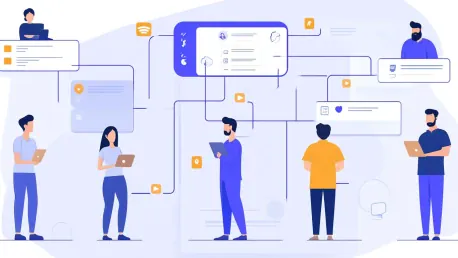The emergence and advancement of Natural Language Processing (NLP) technology have fundamentally transformed the way computers comprehend and utilize human language. This evolution is vividly evident with the rise of GPT-4o, the cutting-edge AI model capable of simultaneously processing text, images, and speech. This concurrent handling enables AI interactions to be faster, smarter, and more natural. Below is an analysis and summary of the changes and impacts brought by GPT-4o on NLP across various industries, the benefits it provides, the challenges it faces, and the foreseeable future of NLP technology.
Faster, More Natural Conversations
GPT-4o dramatically reduces response times by managing text, image, and speech inputs simultaneously, which older models could not achieve. It enables instant replies from chatbots, real-time image descriptions, and more natural-sounding voice assistants. For example, a GPT-4o chatbot can analyze a math problem, read it aloud, and explain the solution in real time—capabilities that older models lacked. Additionally, the ability to handle multiple input types concurrently means that interactions with AI are more seamless and intuitive. Users can switch between speaking, typing, and showing images without breaking the flow of conversation, making the technology more user-friendly and versatile.
This leap forward in conversation fluidity has significant implications for user experience. For instance, customer service interactions become more dynamic and efficient as AI can quickly decipher and respond to complex queries that involve different media. This real-time multi-input capability contributes to the system’s overall efficiency, reducing wait times and improving the user interface. In applications where speed and accuracy are paramount, such as emergency response systems or immediate customer support needs, GPT-4o’s abilities stand out as game-changers.
Better Memory for Longer Conversations
Unlike previous AI models that often forgot details in lengthy interactions, GPT-4o has significantly improved memory retention. This allows for more reliable engagement, enabling customer support chatbots to recall past interactions, aiding in long writing tasks, and helping AI assistants better understand multi-step instructions without losing context. This enhanced memory capability is particularly beneficial for industries that require continuous and context-aware interactions. For instance, in customer support, remembering previous queries and issues can lead to more personalized and efficient service, thereby improving customer satisfaction.
In educational settings, the ability to remember past interactions allows AI tutors to provide more tailored instruction and feedback over time, helping students grasp complex subjects more effectively. Further, this memory feature enhances the AI’s capacity to support intricate projects such as academic research or prolonged content creation processes, ensuring consistency and context are maintained throughout. By maintaining a coherent grasp on long conversations, GPT-4o stands to significantly increase the reliability and depth of AI-assisted engagements, bringing a higher degree of authenticity and reliability to human-computer interactions.
Faster and More Affordable AI
GPT-4o operates more quickly and at a lower cost, making advanced AI accessible even to smaller businesses. Cloud-based AI services and AI-powered applications require less processing power, broadening the availability of sophisticated tools without incurring steep expenses. The cost-effectiveness of GPT-4o means that more businesses can leverage AI to streamline operations, enhance customer experiences, and innovate their services. This democratization of AI technology is set to drive significant advancements across various sectors.
As AI becomes more affordable and faster, the potential for innovation in various fields expands exponentially. For small enterprises, this means access to powerful AI tools that were previously only available to large corporations. Hence, startups and small business operations can greatly benefit from AI advancements in customer service, marketing, and operational efficiencies. This widespread availability can spur a tech revolution where innovation is no longer constrained by financial barriers, fostering a more competitive and creative marketplace.
Industry Impact and Applications
AI chatbots, leveraging GPT-4o, offer faster and more human-like interactions. They efficiently manage both text and voice queries and can handle complex questions with more tailored responses. For instance, companies like Shopify and Airbnb are experimenting with AI voice assistants for multilingual customer service. The implications for customer service are substantial, as AI can significantly reduce wait times and handle a larger volume of queries with more personalized responses. These improvements lead to higher customer satisfaction and service efficiency, providing businesses with a competitive edge.
In education, AI tutoring has progressed beyond text-centric approaches. GPT-4o enables interactive teaching through voice and visual aids. AI tutors can adapt instruction to individual learning styles, offer personalized feedback, and use voice and image support to enhance the learning experience, as seen with Khan Academy’s AI tutor. The educational sector stands to benefit greatly from these advances, with AI tutors providing supplementary support to traditional education by accommodating various learning preferences and pacing. This tailored instruction can lead to higher engagement and understanding among students, making education more accessible and effective.
Challenges of GPT-4o
Despite advancements, GPT-4o can still exhibit biased outputs. Efforts are being made to overcome this by expanding training datasets, creating tools to track AI decision-making, and incorporating stricter filters to prevent misinformation. Bias in AI responses remains a critical issue as it affects the fairness and accuracy of AI-driven decisions. Addressing these biases involves continually updating training data from diverse sources, ensuring comprehensive and balanced datasets. Developers also focus on creating more sophisticated models to identify and mitigate bias during the AI’s learning and decision-making processes, promoting fairness and accuracy.
Enhanced AI capabilities bring about increased concerns regarding data security. Companies are addressing these by allowing users control over their data, encrypting AI conversations, and adhering to stricter ethical standards and privacy laws. As AI systems become more powerful, they also become more attractive targets for cyber threats. Implementing robust security measures is essential to protect user data and maintain trust. By providing users with greater control and transparency over their data, companies can alleviate some of these privacy concerns, ensuring the ethical use of AI technology.
Future of NLP Beyond GPT-4o
The development and progress of Natural Language Processing (NLP) technology have profoundly changed how computers understand and use human language. This evolution is particularly evident with the emergence of GPT-4o, an advanced AI model that processes text, images, and speech simultaneously. This ability for concurrent handling allows AI interactions to be quicker, more intelligent, and more natural. Here we explore the changes and impacts of GPT-4o on NLP across different industries, highlighting the benefits it offers, the challenges it encounters, and the future prospects for NLP technology.
GPT-4o’s multi-modal capabilities make it a powerful tool in numerous sectors, revolutionizing customer service, content creation, and healthcare with faster and more accurate responses. However, it faces challenges such as data privacy concerns, the need for substantial computational resources, and ethical considerations. Looking ahead, as NLP technology continues to advance, we can anticipate even more sophisticated human-computer interactions, potentially leading to groundbreaking applications and more seamless integration into our everyday lives.









